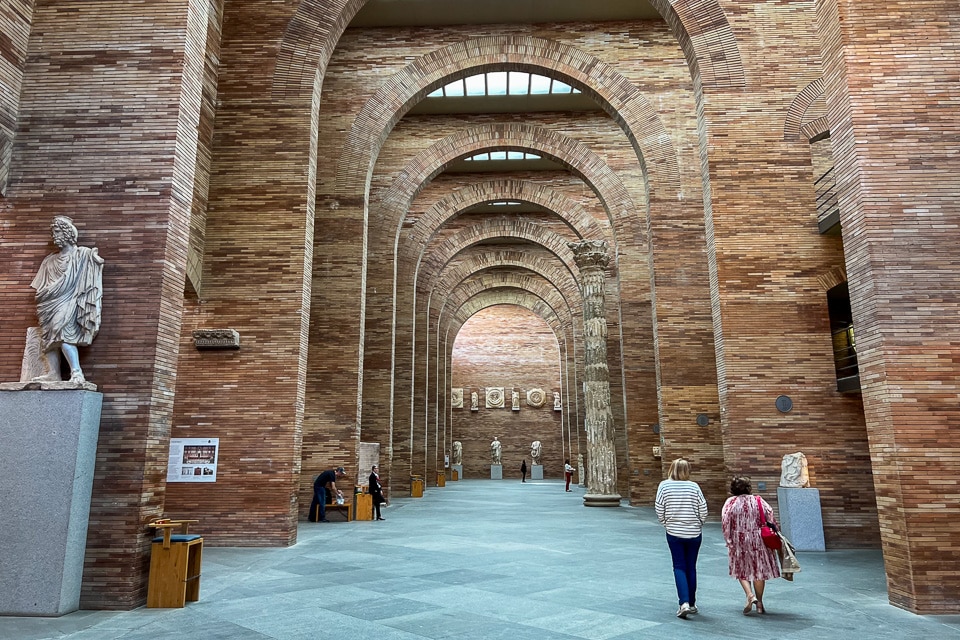
It's a bit hard to imagine that in all the times we've been to Spain over the last nearly 50 years that we took that long to finally get to Mérida, the capital of Extremadura. It's especially unusual because I'm sort of a Roman history geek and the city of Mérida, by far, is the repository of the most spectacular ruins of ancient Roman monuments in Spain. The city was declared a UNESCO World Heritage Site in 1993.
Here's our take on what to see in Mérida.
Table of Contents
Roman Mérida
A brief history of Mérida
Emerita Augusta was founded as a Roman colony on the Guadiana River in 25 BC by order of the first Roman emperor, Augustus. It was established to serve as a retreat and retirement site for the veteran soldiers (emeritii) of the Roman legions who fought in the Cantabrian Wars, the final wars against the Celtic tribes of northern Spain that solidified Roman control of the Iberian Peninsula. The city was established quickly as a large Roman city, with all the traditional temples and entertainments. It immediately became the most important city and the capital of the Roman province of Lusitania and maintained its status until the 5th Century.
The Visigoths took over most of Spain in the 5th and 6th Centuries and Mérida remained an important city of the Visigothic Kingdom of Hispania. In 713, the city was conquered by the Moors and remained under Muslim rule until the Reconquest by the Christian King Alfonso IX of León in 1230.
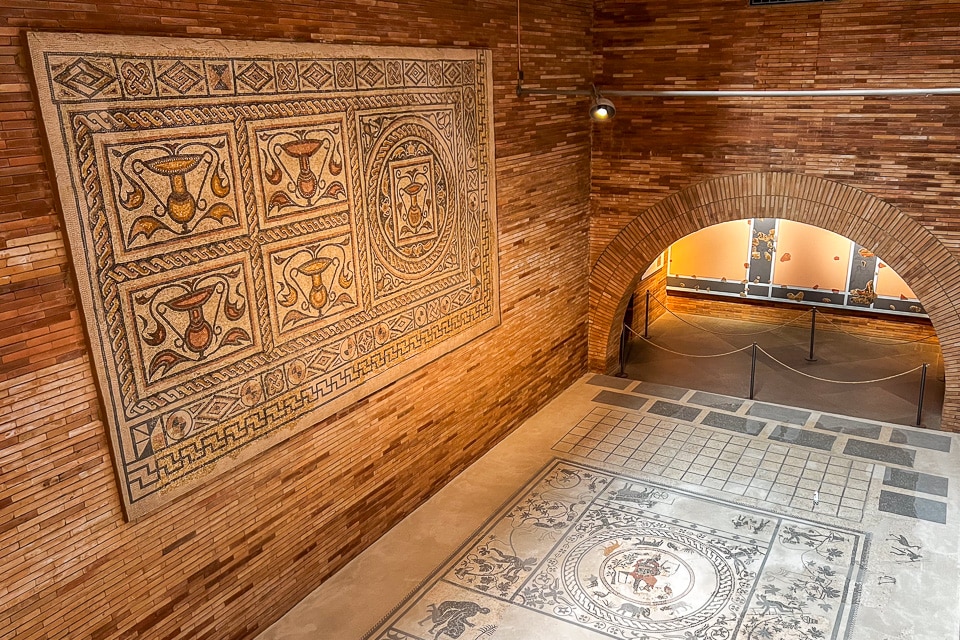
The National Museum of Roman Art (Museo Nacional de Arte Romano)
The best place to start your tour of ancient Rome in Mérida is the National Museum of Roman Art. The, building itself, designed by the Spanish architect Rafael Moneo Vallés, with its colossal dimensions and repeated Roman style arches in brick and concrete, recalls and pays homage to the beautiful buildings of Rome.
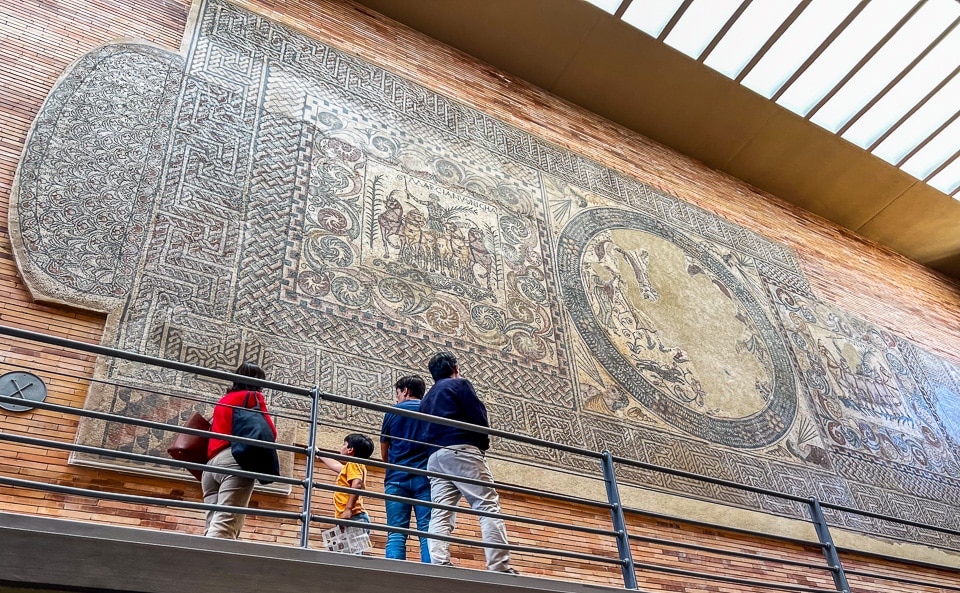
The Museum houses an extraordinary collection of statuary, funeral monuments, household artifacts, coins, and more. Most impressive though are the huge mosaics lifted from the floors and walls of Roman houses of the era. The scale of the museum serves as a perfect home for some of the huge mosaics that must have graced the homes of very rich Romans, indeed.
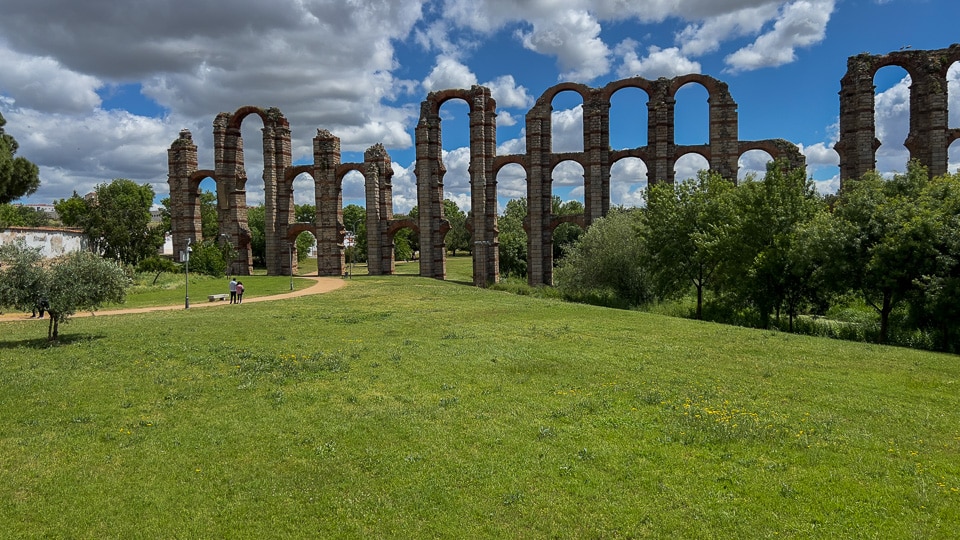
The Aqueduct of Miracles (Acueducto de los Milagros)
This towering aqueduct is part of the hydraulic system which brought waters from the Proserpina Dam, and connected to a system that carried water all over the city of Emerita Augusta. It is indeed a miracle of preservation and testament to Roman building skill that more than 800 meters (2600 feet) of this aqueduct stand today. Some of the brick and granite structures rise 27 meters (90 feet) above the ground.
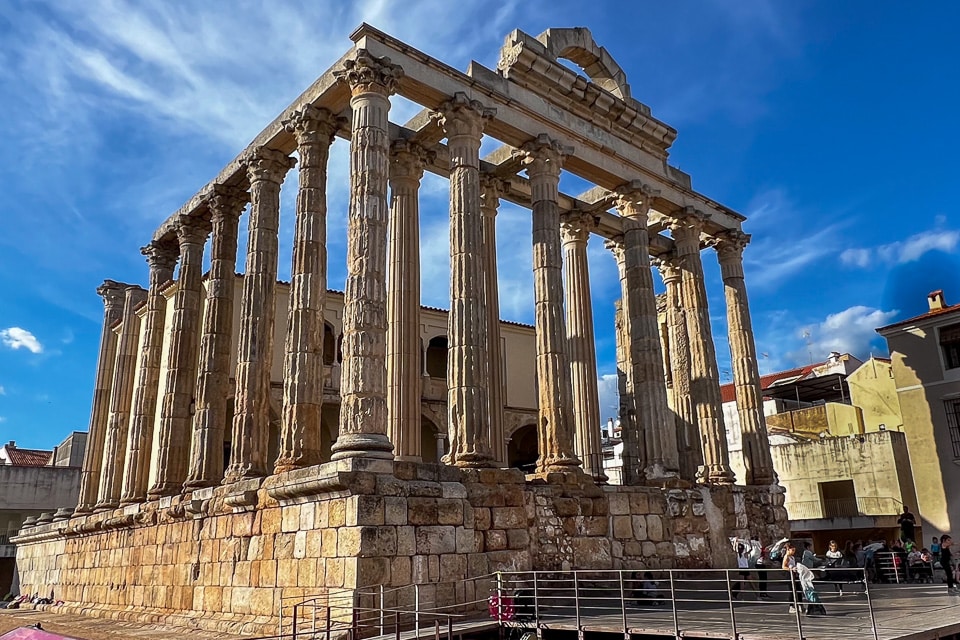
The Temple of Diana (Templo de Diana)
The Temple of Diana was a sacred site constructed by the Roman Emperor Tiberius in the early 1st century AD. The original structure with its Corinthian columns is probably among the best-preserved Roman ruins because it was incorporated into a 16th Century Palace. The Temple sits in the center of what was the Roman Forum and was actually, according to historians, a temple to the cult of the Emperors rather than the goddess Diana. There is a small museum of Roman era artifacts attached to the Temple.
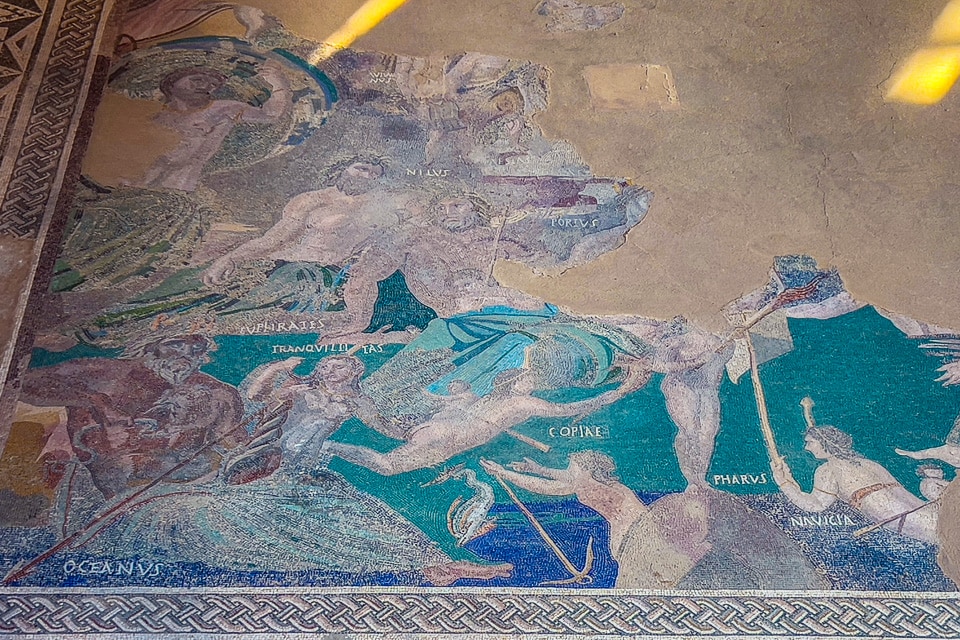
The House of Mithraeum (Casa del Mitreo)
This 2nd-century Roman house obviously belonged to an important and wealthy family. Together with the house, remains related to the cult of Mithras were found and this is where its name comes from. The house consists of three peristyles, or courtyards, with columns around which the residence is organized. The rooms are decorated with mosaics and murals, including the “Cosmological Mosaic” map of the world with the major rivers and the heavens and oceans.
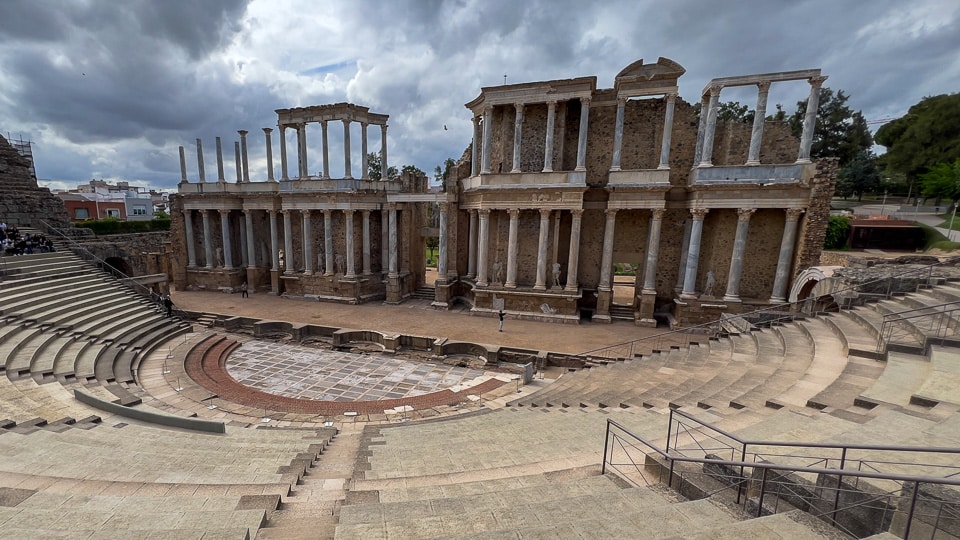
The Theater (Teatro Romano) and Amphitheater (Anfiteatro)
Mérida's most spectacular Roman monument is the theater built by Augustus' great general and son-in-law, Marcus Agrippa (who also built the original Pantheon in Rome.) The preservation of the theater is remarkable, including some of the original statuary seeded among the columns behind the stage. The theater is used today for theatrical productions and concerts. The theater could hold about 6000 spectators.
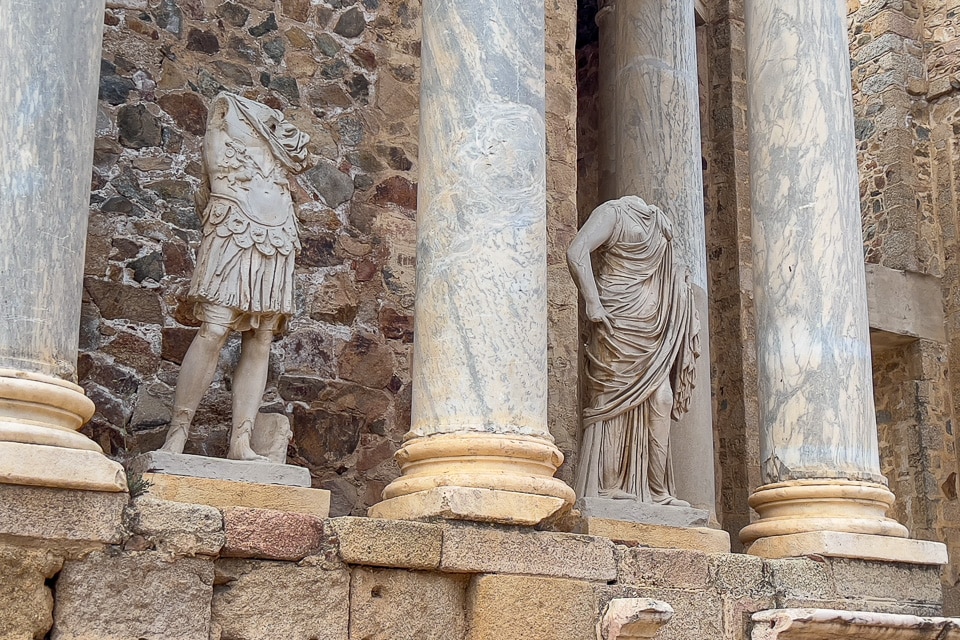
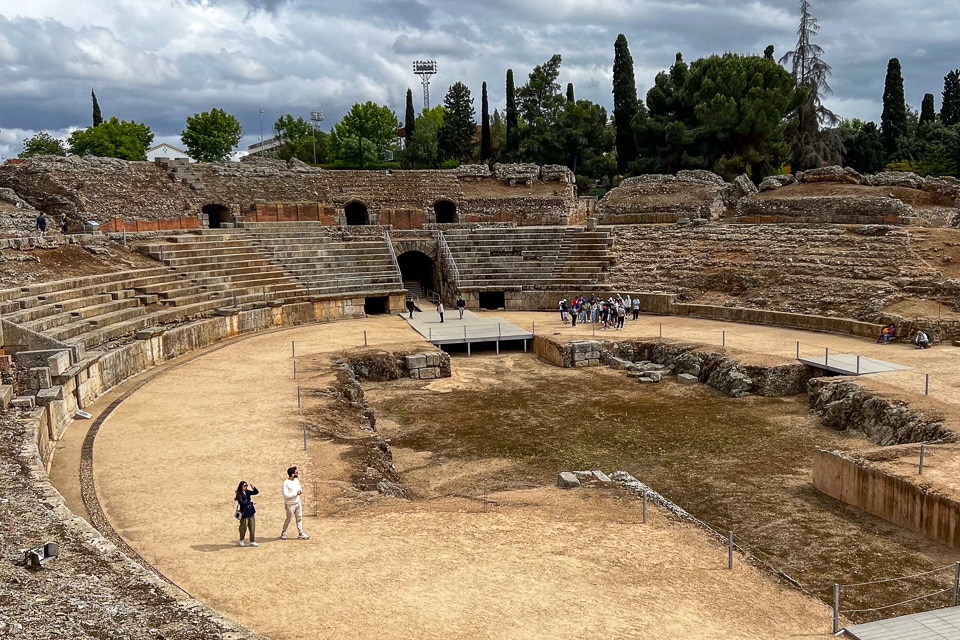
The Amphitheater, which is right next to the theater, was the venue of more “sporting” events, including of course, gladiator combat. It held about 15,000 spectators in its day, which is perhaps indicative of the preference in entertainment of the general citizenry.
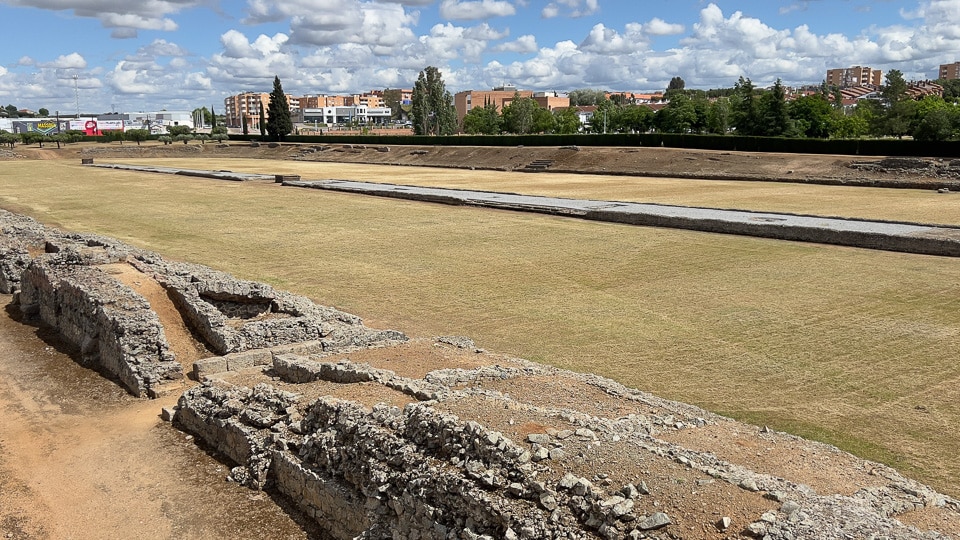
The Roman Circus (Circo Romano)
The Roman Circus, reminiscent of the Circus Maximus of Rome, served the same purpose as a venue for chariot races. The central element and much of the spectator stands are visible today, although one end of the Circus was once cut off for a Spanish highway. Since the renewed interest in preservation of the main attractions of Mérida, the road has been re-routed and the gates where the horses and chariots entered the Circus have been restored at least to the point of being able to discern their original function.
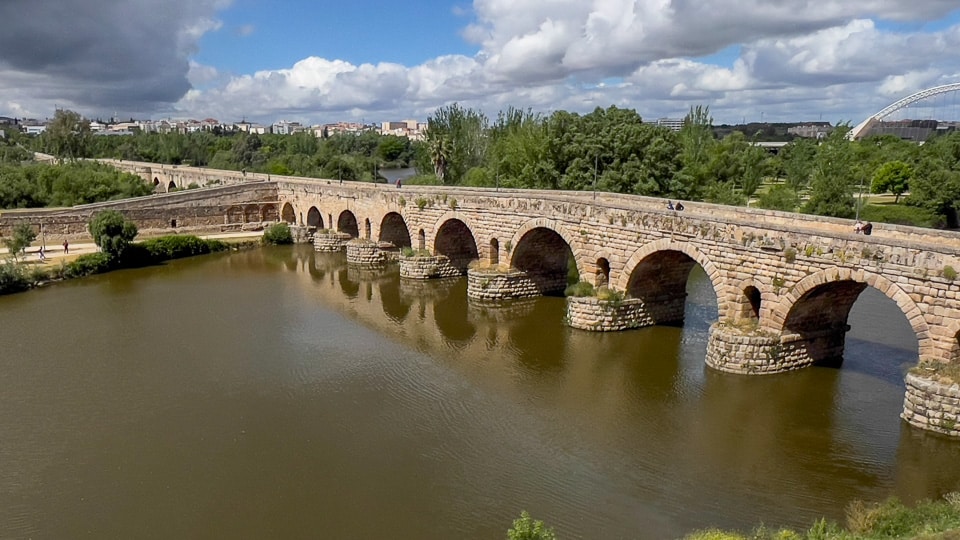
The Roman Bridge (Puente Romano)
The Roman bridge of Mérida is the world's longest (in the sense of distance) surviving bridge from ancient times, having once covered an overall length of 755 meters with 62 spans.
Other notable Mérida attractions
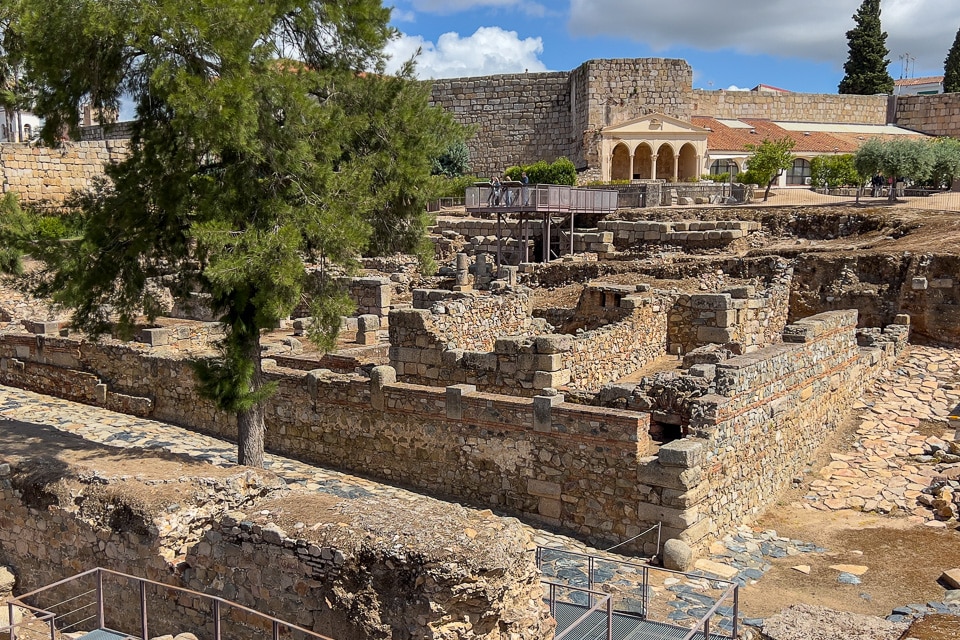
The Alcazaba (Moorish Fortress)
The Alcazaba, situated at the end of the Roman bridge, was a large Islamic fort built in the mid-9th Century and was designed for the protection of the city during its era of Muslim rule. Today it encompasses some of the buildings used as barracks, as well as what was once a substantial Roman home.
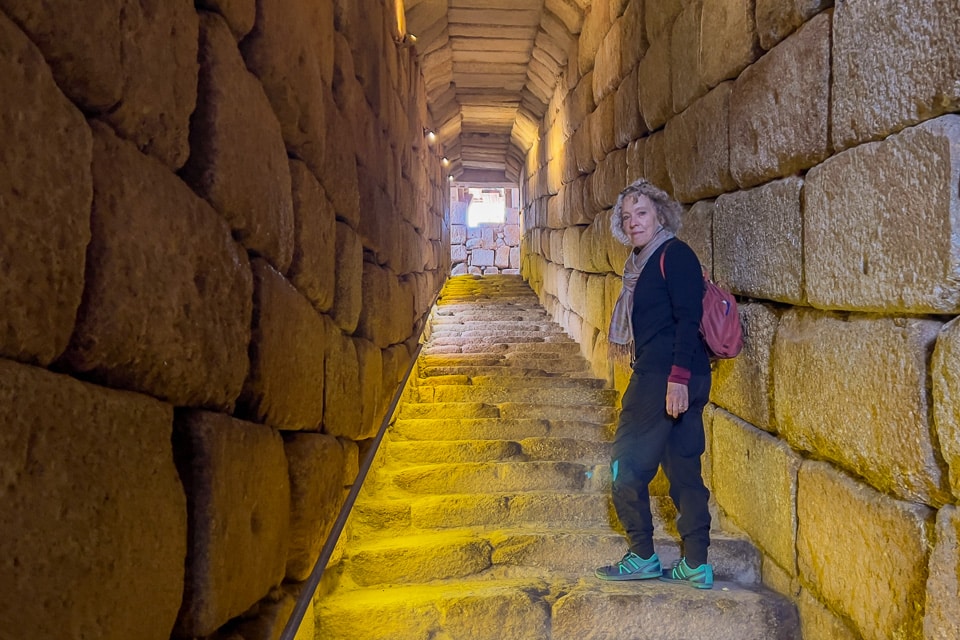
The most interesting bit that remains, though, is the cistern that supplied the fort's water. You can walk down the original steps to see there is still water in the cistern. There are actually two stairways, to accommodate up and down traffic, especially of the animals who hauled the water.
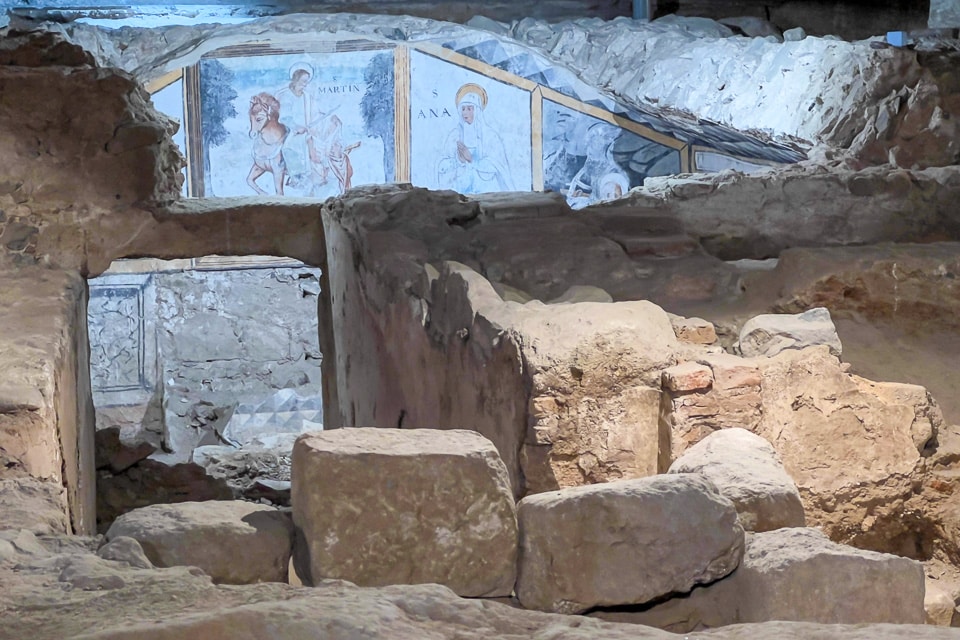
The Basilica of Santa Eulalia
There's a lot of confusion about Saint Eulalia. Eulalia of Mérida was a young Roman Christian martyred in Augusta Emerita during the persecution of Christians under the Emperor Diocletian. Other views place her death at the time of Trajan Decius. There is debate whether Saint Eulalia, a patron of Barcelona, whose story is similar, is the same person. It's impossible to know, of course. Barcelona has the relics of their Saint Eulalia there, and Mérida has theirs here.
Underneath the current Basilica are remains of the first Visigothic church on the site, including frescoes you can just spot from the walkway around the ruins.
Combined Mérida Monuments Ticket
BTW, the Roman sites of the Circus, the ruins of Moreria, the crypt of Santa Eulalia, the House of Mitreo, the theater and amphitheater, the House of the Amphitheater, and the Temple of Diana can all be visited with one ticket you can buy at the first site you visit. The ticket costs €16 for adults and €8 for seniors for self-guided visits. Supposedly the senior rate is only good for residents of the European Union, but the kind vendor at the Temple of Diana gave us the rate. The combined ticket can be used over three days, as as we did, as long as you limit yourself to one visit per monument.
The National Museum of Roman Art is €6 for adults, and is free for seniors, even if you're not an EU resident.
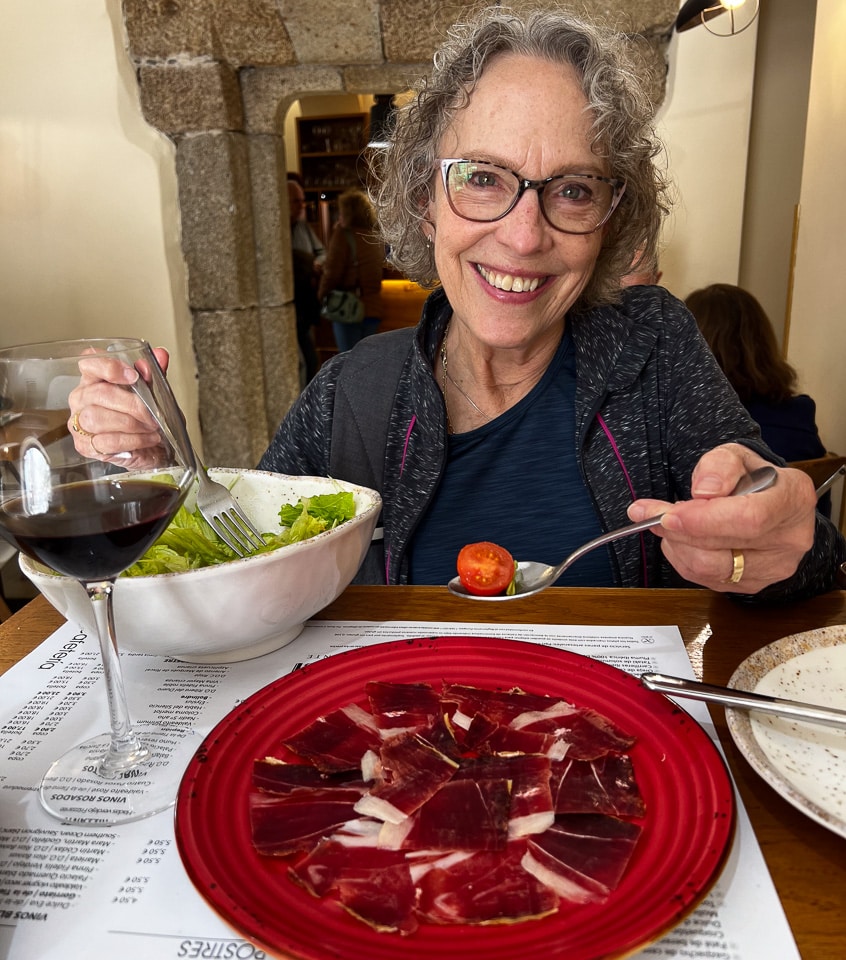
Where we ate in Mérida
We think the excellent cuisine of Extremadura is largely overlooked by visitors and foodies. For a snapshot of a coulpe tasting menus, plus an interview with a chef from Cáceres, read our post, Great Food and Top Things to Do in Cáceres, Spain.
A de Arco. Our favorite meal in Mérida was lunch at this lively local place, positioned right at the base of Trajan's arch. We were lucky to nab a hightop table in the bar area, where we received very good service and nice wine recommendations. We shared tapas in order to sample as much as we could. Stars of the day were a tart cherry gazpacho – not too sweet, extra refreshing – and the dessert tort with blueberries and cream. And, of course, the ‘racion' of Jamón Ibérico bellota. It's clear Chef respects the produce of Extremadura.
Restaurante La Tahona. This restaurant, also near the city center's Plaza España, has all the intentions of A de Arco, minus the welcoming face. To find the entry door, don't be shy. You'll need to walk through a hall and courtyard. The space, with its stone walls, is more impressive than the food, so we decided to return to our hotel for a coffee and brandy.
Las Delicias del Ibérico. This might be considered touristy, because it is on the main street connecting the center with the Amphitheater. But we couldn't resist being beckoned in by. And glad we found our place in the second floor room. The recommended salad of red peppers was excellent (we could have done without the tuna), and the shared rack of lamb chops excellent. Possibly these were the smallest chops I've ever seen. And they were cooked perfectly.
Aguacate. We understand. Some days the idea of more meat, fish, and Extremaduran delicacies is just too much. Get your dose of Mexican and Carribean food here, a la España. It's a small, popular joint, so show up early or with reservations.
Hornito & Freylas. By happenstance, we stopped at this traditional bar before heading into the Basilica Eulalia across the street, to get our energy up after lots of walking. Two cañas of beer, a little dish of olives, and a plate of jamón and cheese set us right. The bar regulars were friendly, the soundtrack good, and the little old ladies at another table perfectly in place. Don't expect a website from this bar with over 40 years of history.
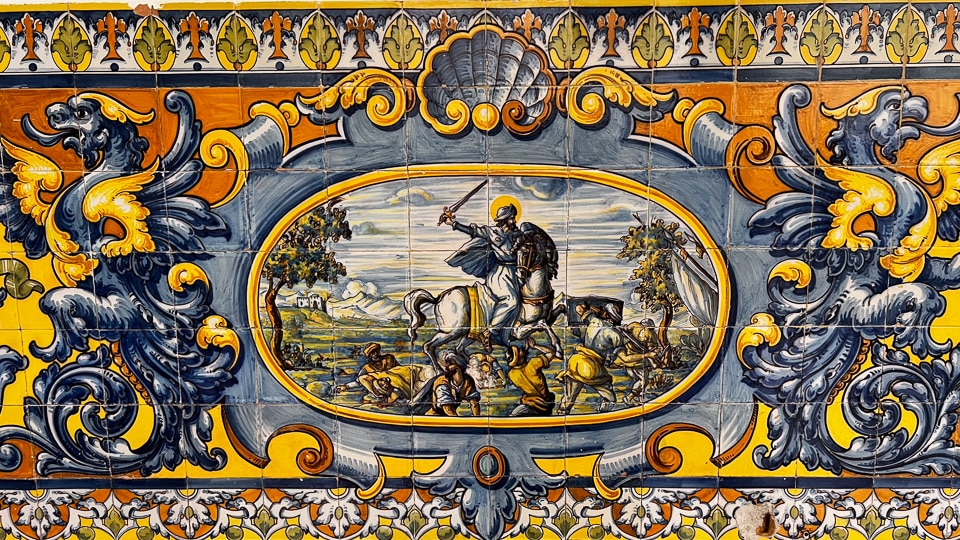
Where to stay in Mérida
We spent our three days in Mérida at the relatively plush, for us, Hotel Ilunion Mérida Palacio. The Ilunion has very nice large rooms, and best of all, a lovely central courtyard where breakfast is served in the morning, and where you can have a nice glass of wine and some tapas at the end of your day exploring Mérida. We knew we were in the right place when the toreros who were appearing that evening at Mérida's Plaza de Toros appeared in the lobby like scene from The Sun Also Rises.

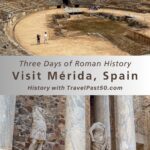
Kris and Tom,
I’m amazed by this information about Merida! John and I stopped there briefly in 1972, on our way from Sevilla to Badajoz, heading toward Lisbon. We were amazed by the Roman Theater, but that’s the only thing we saw before we drove on. So now we know we need to revisit Merida! And I’m looking forward to learning about Jerez de la Frontera, another city we haven’t seen. You are so right, there are always more places to explore in Spain!
We did like Mérida a lot. A lot to do. And the food was quite nice, especially at A de Arco. Cherry gazpacho! Who knew? In general, Extremadura seems to have far fewer tourists than the rest of Spain, and that’s a good thing. We could spend a lot longer there. Still have to see Badajoz and a few other spots.